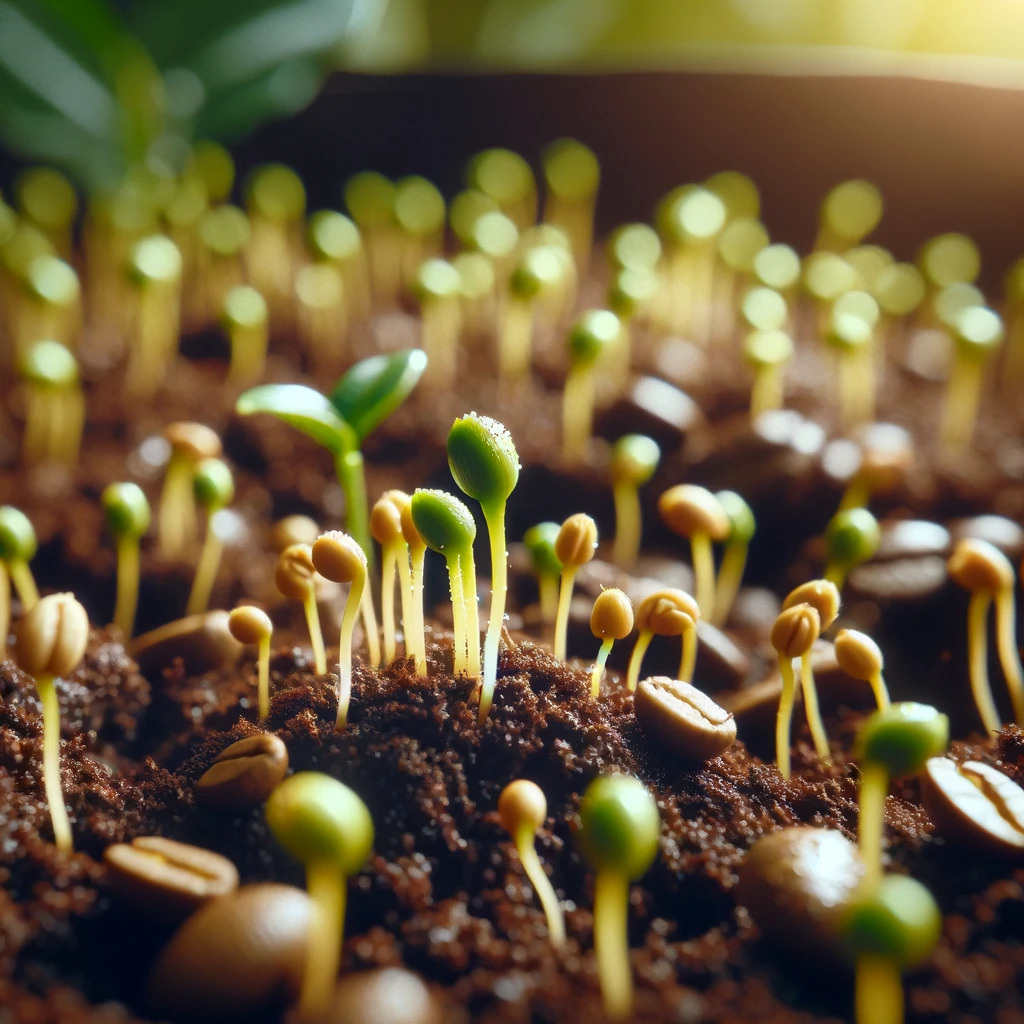Coffee cultivation is both an art and a science, and understanding its phenological stages is essential for any producer looking to optimize their harvest. This article details each stage of the coffee life cycle, providing key technical information to maximize the quality and yield of this prized crop.

Phenological Stages of Coffee
Stage 1: Germination
- Start of Life: Coffee germination begins once the seed absorbs water and breaks its dormancy. This process can take two to three weeks and requires controlled moisture and temperature conditions to ensure healthy development.
- Early Development: Once the seedling emerges, it is crucial to protect it from direct sunlight and maintain adequate moisture. Nutrition at this stage must be carefully balanced to avoid excessive growth.

Stage 2: Vegetative Growth
- Development of Leaves and Stems: Coffee plants rapidly develop their leaves and stems. During this stage, careful management of watering and nutrition, focusing on nitrogen, phosphorus, and potassium, is essential to strengthen the plant’s structure.
- Branch Formation: Selective pruning helps to form the desired structure of the coffee bush and promote an even distribution of resources, crucial for the plant’s long-term health and productivity.

Stage 3: Flowering
- Flower Development: Coffee flowers appear after periods of drought followed by rains. Pollination, whether natural or assisted, is fundamental at this stage. Good crop management can positively influence the quality and quantity of flowering.
- Care During Flowering: It’s important to monitor for pests and diseases, as well as to maintain a balance in watering and nutrition, especially the supply of potassium and phosphorus that favors floral development.

Stage 4: Fruit Development
- Fruit Development: Following flowering, fruits develop, known as coffee cherries. This process can take several months and requires constant monitoring of pests and diseases, as well as proper irrigation management.
- Maturation: Maturation is a gradual process where the cherries change color and reach their optimal point for harvest. It’s vital to harvest at the right time to ensure the highest quality of coffee.

Stage 5: Harvest and Post-Harvest
- Harvest: Harvesting must be done carefully to select only the ripe cherries. Harvesting techniques can vary, but manual selection is often preferred to ensure quality.
- Post-Harvest Processing: After harvest, coffee processing is crucial. This includes depulping, fermentation, washing, and drying. Each step must be carried out meticulously to preserve the coffee’s qualities.

Conclusion
Understanding the phenological stages of coffee is vital for any producer seeking excellence in their cultivation. Implementing the right practices at each stage can result in superior quality coffee, both in flavor and aroma.
 AgronoBlog – Agriculture Blog
AgronoBlog – Agriculture Blog